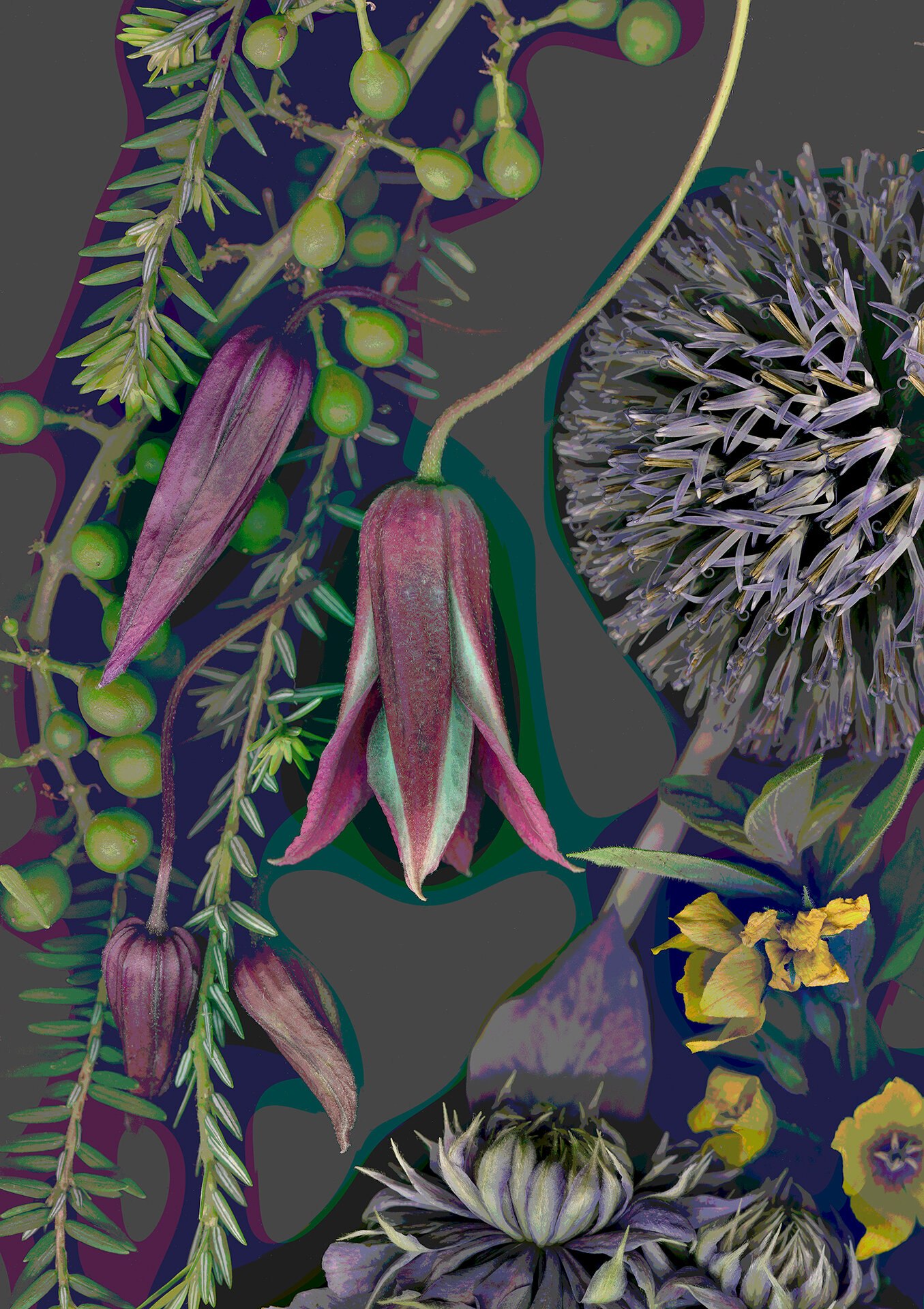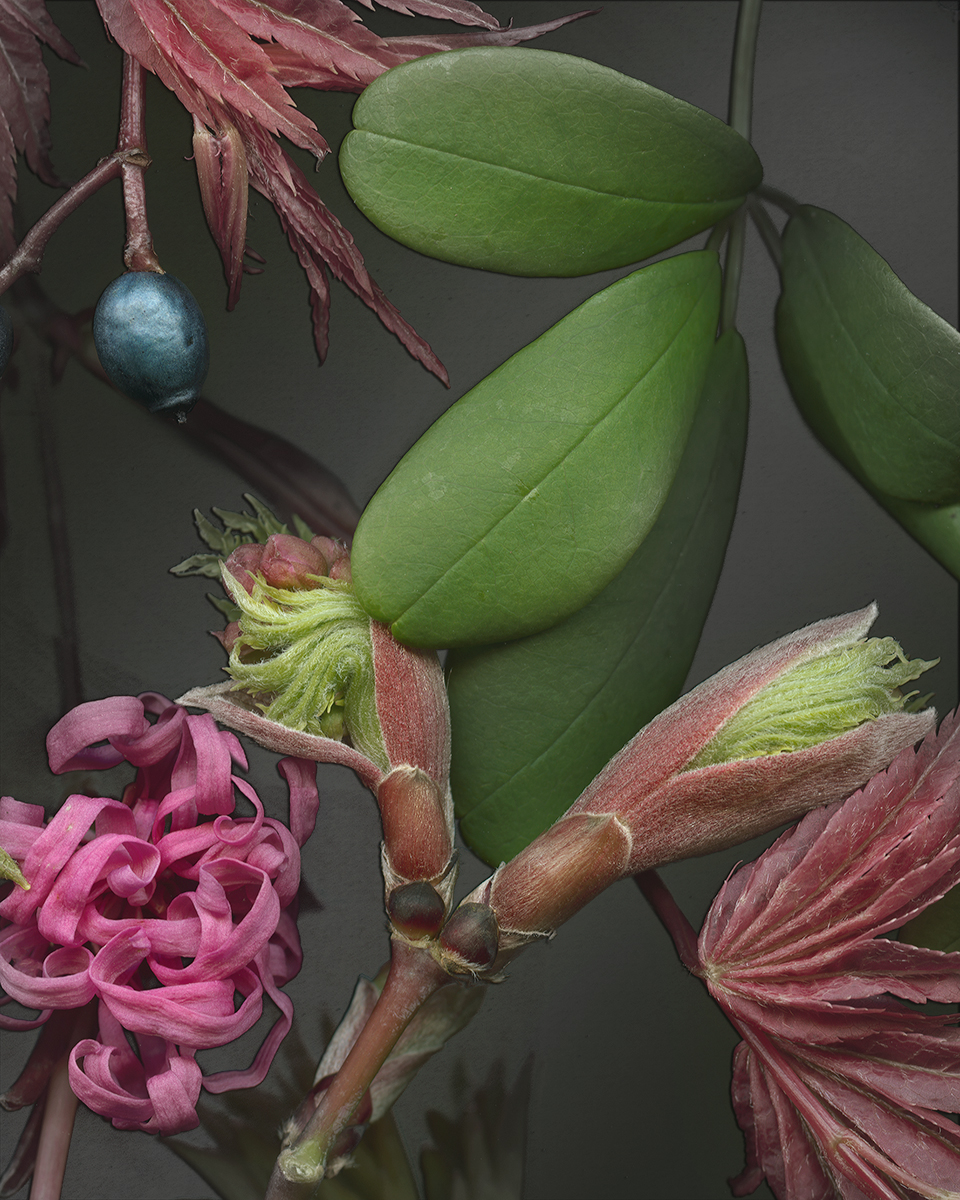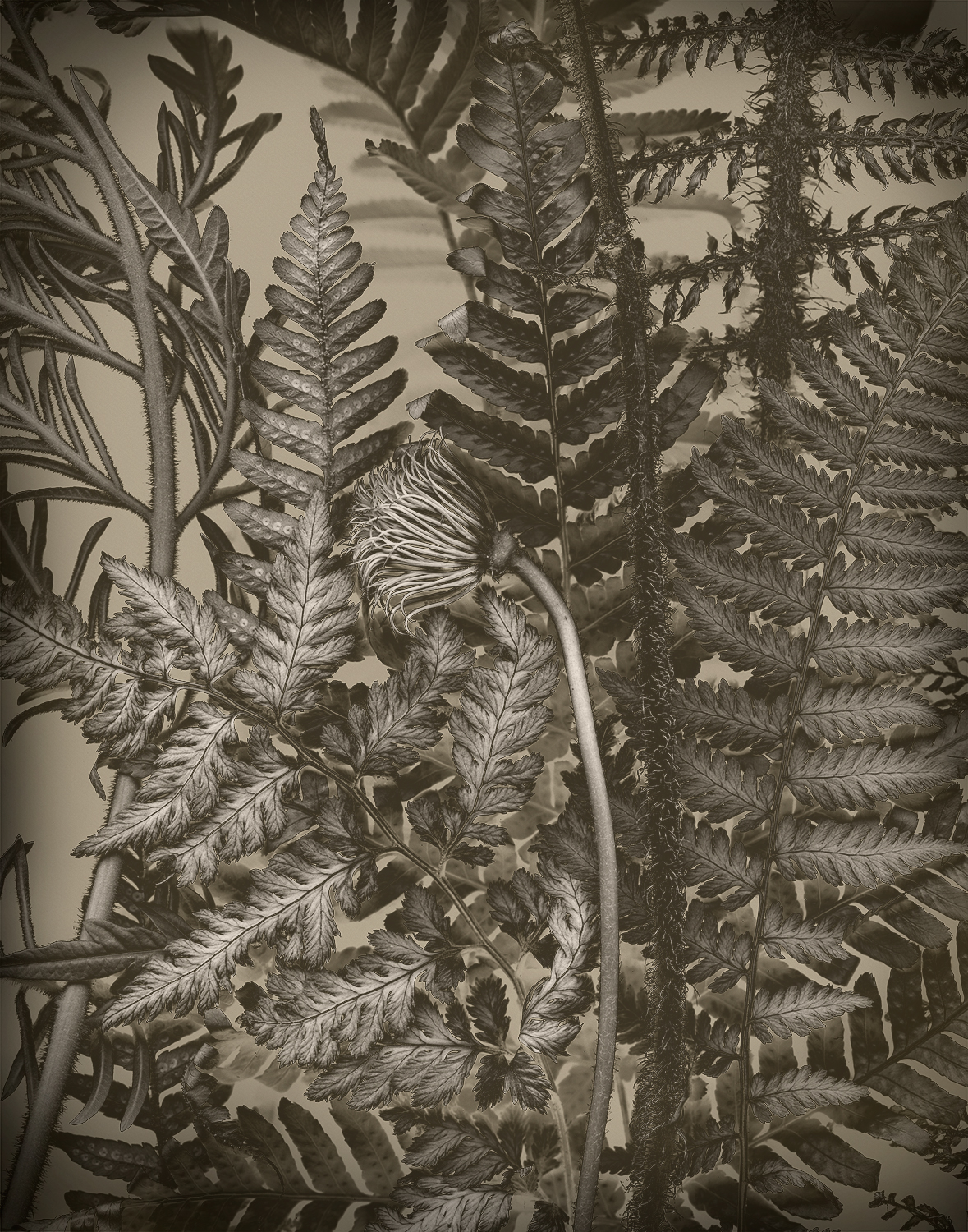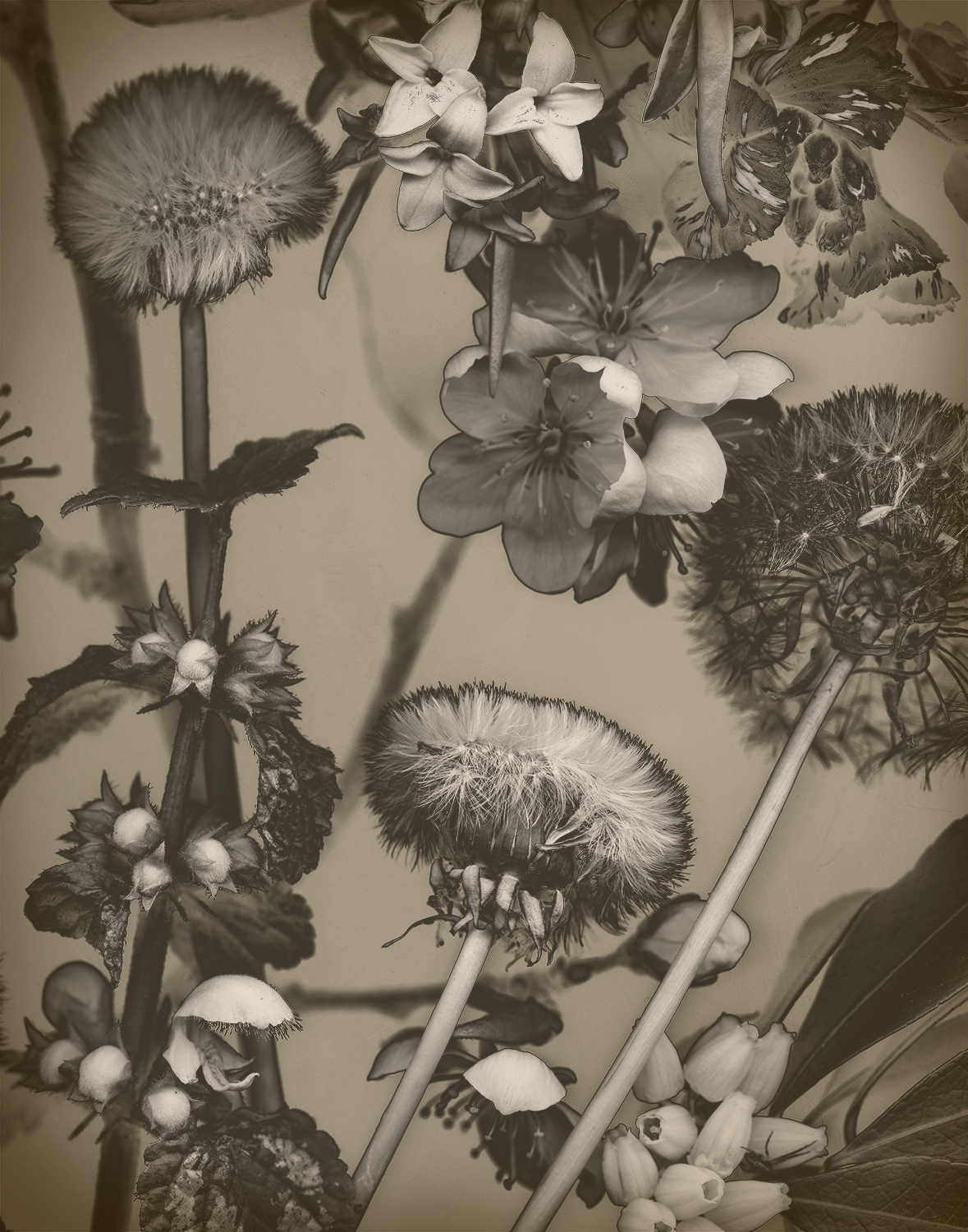Blue Sky Gallery Pacific NW Viewing Drawers
Each year Blue Sky Gallery hosts a juried call for entries for the NW Viewing Drawers. The rules are simple: a tightly edited collection of 10 images that fit in the 20"x24" drawer, juried by professionals in the field. Over the past five years, I’ve used the call for entries as a springboard for an experimental direction for my work, ranging from close crops of large work to examine a new focal point, to using analog techniques such as solarization to inform how I want the series to look, to conceptual book arts presentations intended to encourage the viewer to take a closer look. Each year I’m excited to join with the other Drawers artists for a public portfolio walk, and the opportunity to meet other artists with their own interesting points of view. It’s a truly unique component in Blue Sky Gallery’s annual offerings, and I hope you’ll get a chance to visit.
Blue Sky Drawers 2021, juried by Yaelle Amir and Aaron Turner
On view at Blue Sky Gallery, March 22, 2021 through next year about the same time…
about this work:
Who’s Going to Backup Your Digital Life?
Most of Carleton Watkins’ wet plate negatives on glass were destroyed by fire in 1906: we know his work because of prints saved by collectors. Eadweard Muybridge’s glass negatives were scraped and reused, ultimately recycled for use in building greenhouses because the glass was valuable. Frank Hurley, the ship photographer on the 1914 Antarctic expedition led by Sir Ernest Shackleton, retrieved most of his glass plate negatives and camera equipment by diving for them as their ship, the Endurance, was sinking while being crushed by the ice.
I thought about these things this year as I was starting to clean out my long-saved trove of negatives and my vast treasure of Kodachrome slides. I followed the reporting of fellow photographers using pandemic time to digitize their archives. But it was a line in a blog post that halted me with this question: who will care, or even have the equipment, to retrieve those digital resources after you’re gone? So began this year’s commitment to actually print what is important to me.
For this NW Drawers project, I set about thinking about the utter confusion of learning how to read a negative when I first started printing black and white photographs over forty years ago. And then one day, I was able to “see” the negative without effort, and I thought they were beautiful. So it came to be that this work, created by finding good compositions within my much larger still life photographs, became a way for me to explore the literal positive and negative images and the shapes created by combining the opposite images. The colored line framing each image is a reminder to the viewer that this is a print made from digital resources, so that in case someone in the future does find this box of prints, they might have one more clue about why they look the way they look.
2020: Dark Days
Juried by Julie Keefe and Kris Graves.
Kris Graves is a photographer and publisher based in New York and London, and is Director of Kris Graves Projects, collaborating with artists to create limited edition publications and archival prints, focusing on contemporary photography and works on paper.
Julie Keefe is an artist whose work includes installations and collaborations with a variety of institutions, health care organizations, artists, children, and communities. From 2013 to 2017 she served as Portland, Oregon’s inaugural Creative Laureate, a platform to advocate for the arts, arts education, equity, and the overall cultural health of Portland.
Here’s a link to the project at Blue Sky Gallery, where you can also visit the entire show, 10 pieces for each artist. It is a joy to be able to show work in this exhibit with these esteemed colleagues.
About this work:
2019 has been a tumultuous year by anyone's accounting, with fires, floods, and the insane leaders of the world that give me a distinct feeling of the planet being out of control. Perhaps it is my artwork that grounds me, that gives me at least an illusion of being in control, if only on the 8.5" x 11.7" scanner glass on which I compose my still life photographs. Usually, my work is precise, accurate, and hyper-real. To capture the dark, weird and fake mood of the era, for this series I fiddled with the original images. Reality is so much easier: it was difficult for me to push my work in this direction. I did, in fact, learn to love it. Sign of the times, I guess.
The patient, engaged, and observant viewer will notice something only when she pulls the unmounted prints from the handmade portfolio box where they live. I encourage this un-gallery like behavior. My presentation concept is based on the accessibility of handling photographs that the NW Drawers encourages. By encountering them loose in a portfolio, the viewer gets to handle the prints as objects, and with no gloves worn, oils from their hands will indelibly stain the prints. Scuffs on the matte surfaces as they are handled, viewed, and re-stacked will create a patina, quietly recording their viewing history throughout their year in and out of the drawer. I look forward to learning that someone took the time to spend some time with my prints, perhaps spreading them out on the floor so they can figure out the whole, gaining their own sense of control.
2018: Some Oregon Flowers
Juried by Hamidah Glasgow, the Executive Director and Curator at The Center for Fine Art Photography in Fort Collins, Colorado.
Each of these archival pigment prints are part of an edition of 20, at 8"x10" on 9 1/2" x 12" paper. The collection at Blue Sky is housed in a handmade portfolio box. The first edition prints in the box are for sale as a collection of the 10 prints with the box. Editions 2 through 20 of each print are sold separately. The exhibition debuts April 5, 2018, to coincide with Portland's Photography Month, and extends through March of 2019.
Click on any image to enlarge.
About this work:
Inspired by the hand colored collotype prints of Kazumasa Ogawa, specifically those from his book “Some Japanese Flowers”, I’m re-imagining some details of my own very large color still life photographs. I’m re-considering the colors that I originally photographed, re-thinking my subject’s foreground/background relationships, and am recalling the smell of my old Marshall oil colors as I work with this digital hand coloring craft. Studying the works of Ogawa, who worked in Japan in the late 1800’s, I’m fascinated by the hand applied colors on muted backgrounds. Adding color to a monochrome photograph is a refreshing opposite to working in a digital world where everything starts out in color. Usually obsessed with getting the colors in my work as accurate as possible, I’m excited and liberated by this series of work’s odd muddy crispness.
The project’s size restrictions and the ten-piece edit are limits that help keep me focused in making this collection of small archival pigment prints housed in a hand-made clamshell portfolio box. My presentation concept is based on the accessibility of handling photographs that the NW Drawers encourages. By making the images small, I’m asking the viewer to look closely. By placing them loose in a portfolio, the viewer gets to handle the prints as objects, and with no gloves worn, oils from their hands will indelibly stain the prints. Scuffs on the matte surfaces as they are handled, viewed, and re-stacked will create a patina, quietly recording their viewing history throughout their year in and out of the drawer.
2017: Solarized Flora
Juried by Mitra Abbaspour, an independent curator and scholar based in New York. From 2010–2014, she was Associate Curator in the Department of Photography at The Museum of Modern Art.
Each of these are printed as an edition of 20, at 11"x 14". See them at the spring Portfolio Walk at Blue Sky on Saturday, March 17, 2018, from 4-5pm.
Artist's Statement
At a recent photography review, while showing my black and white prints of still life flora that I’d worked hard to get a tonal range to be proud of, I described to the reviewer that what I was seeking was to make prints that, technically, looked like early 20th century photogravure. She agreed that I had succeeded, but asked me why I didn’t just have my work printed in photogravure, or study it and learn how to do it myself. Oh dear… Sigh... One more thing to add to the endless list of aspirations...
Weeks later I ran across this 1987 quote from Andy Warhol:
“Ran into Bill Cunningham on his bike, I just wish I could do what he does, just go everywhere and take pictures all day.”
It made me laugh out loud, and feel totally liberated. Just what I needed.
With that in mind, I’m letting myself experiment with something I explored back in my darkroom days, a few decades ago. For this Blue Sky project, confronting the limitations of small scale and a flat presentation, tucked away in a drawer no less, I made a series of still life photographs that look like they were solarized prints with the serendipitous technique developed by Man Ray and Lee Miller. I use 21st century tools: a scanner as image capture, an ink jet printer to make the print. The solarization comes, not from turning on the light half way through developing the wet print, but by knowing what I seek in the image, and manipulating the output through fussing with sophisticated software. Like the accident of turning on the light that led to the discovery of solarization, so did my hitting some “wrong” buttons when working with my digital image. The photographs are experimental, yet a part of the continuum of my still life floral work, striving for beauty. I’m glad for the reminders of human longing, of limits, of happy accidents, and ultimate personal goals.
2016: Bugs and Various Winged Creatures
Juried by Katherine Ware, Curator of Photography at the New Mexico Museum of Art in Santa Fe.
Ten archival pigment prints, 11"x14", in 16"x20 mats, edition of 20 each. Available for sale.
This series is about paying attention to the bugs, beetles, and winged creatures that populate my work. Yes, the bee is really from Sarasota, Florida. I found him dying on a bench early in the day, and made a note to self to check on him later. Still there, baking in the sun, he was done with this planetary life, so I put him in a yogurt container in our motel freezer, and brought him home to star in many of my pieces. I love that Sarasota Bee.
Aphids are usually a surprise revealed at 16x magnification. They tend to hitchhike home with me unoticed till enlargement. The fuzzy caterpillar was a thrill: the bright scanner light made him peek over the leaf, and cracked me up. The only thing I use Photoshop for is cleaning up dirt, pollen, caterpillar poop, and smudges that invariably show up on the glass. In these high resolution scans, all that small stuff shows up really well, so I sit in front of a computer a lot.
2015: Are You Ready for Your Closeup?
Juried by Shane Lavalette and Prudence Roberts.
Ten archival pigment prints, 12"x 17", in 20" x 24" mats, edition of 20 each. Available for sale.
In 2014 when this call for entries went out, I had been working on images in the 34"x48" range, and the idea that I would intentionally make work that would be printed at about 12"x17" was appealing. I knew that simply shrinking my large scale works was not what I was interested in because the whole point of my work is to show what the eye can rarely see. When I was editing work for a Portable Works project for Portland's Regional Arts and Culture Council, I was excited by work that I was making that was composed in a more serene way. So my goal with this 10 piece selection was to make images that were complete at this scale. This concept that each scale has its determined composition has continued to inspire me when I'm creating a still life photograph.






















































